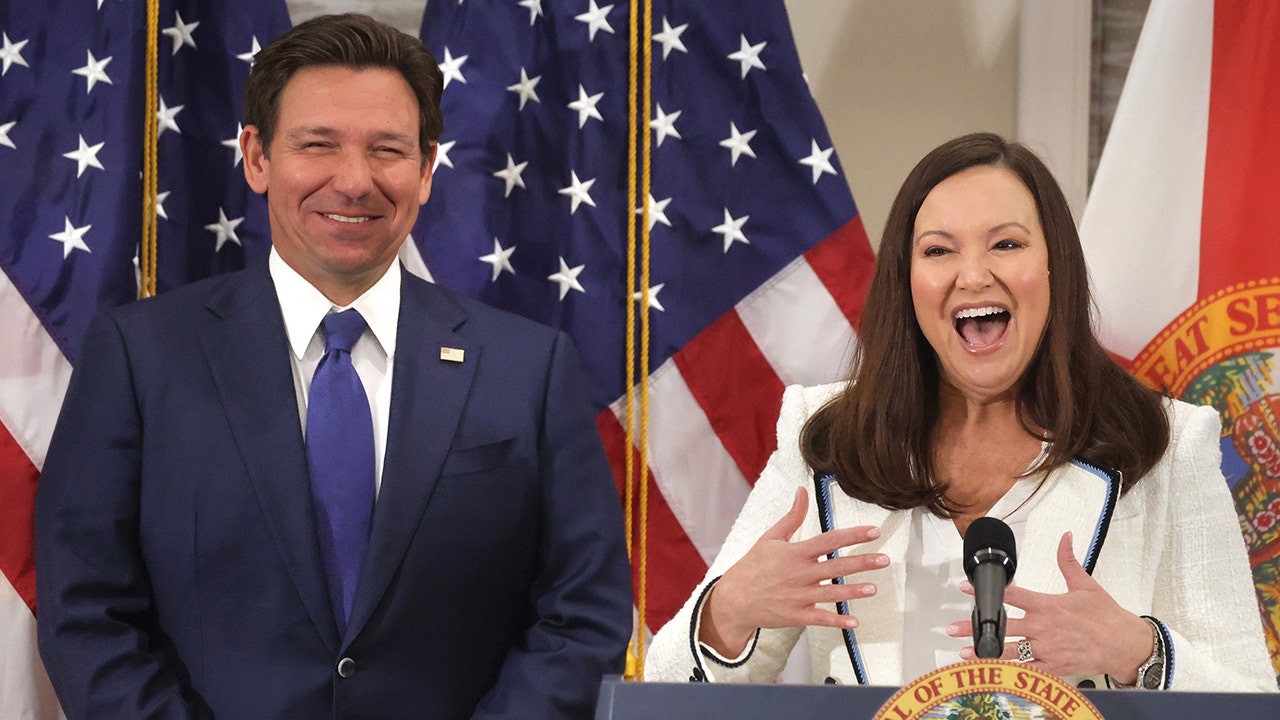North Dakota
Park document lays out ‘script’ for discussing removal of wild horses, shows bias, advocate says

MEDORA, N.D. — National Park Service officials discussed how to explain “contradictions” in a key park document that described the wild horses in Theodore Roosevelt National Park as an “other important resource” at a time the park was proposing to get rid of the horses.
The 33-page “overview” document, including “workshop notes” from a meeting of park officials in October 2022, laid out talking points for park officials to make in public meetings and messages concerning a new management plan for horses and longhorn steers in the park.
Chris Kman, president of Chasing Horses Wild Horse Advocates, described the document as a “script” that shows officials plotting how they would explain reasons for getting rid of the horses and longhorns.
“It’s deliberate and calculated,” Kman said Monday, Oct. 9. “It’s like they’re pounding out the details on the narrative they’re going to feed the public. They’ve got answers for everything,” including what to say if legal action is brought to contest a decision to remove the horses.
The document repeatedly provides examples revealing officials’ intentions to remove the horses, rather than weigh alternatives that would allow the horses and longhorns to stay in the park, she said.
“I think this shows the park is not engaging in a neutral NEPA process at all,” Kman said, despite requirements to do so under the National Environmental Protection Act.
Park Superintendent Angie Richman did not immediately respond to a request for comment.
‘Key decisions’ and ‘preferred nomenclature’
The document summarizes plans made in a meeting of park officials held at the Rough Rider Hotel in Medora in October 2022, two months before the park service
began public discussions in December 2022
concerning its new “livestock management plan.”
Officials also discussed the possible need to euthanize horses after helicopter roundups if they were unable to find people to adopt the animals.
“The group felt that euthanasia should be included for horses that the Park was unable to place after multiple attempts,” according to the document.
At the outset of the planning process, park officials said their preferred alternative would be to remove the wild horses and longhorn steers from the park. This fall, the park
narrowed its options to keeping its current plan for managing the horses and longhorns or removing the herds, gradually or quickly.
“Cattle will be the preferred nomenclature, not steer or longhorn steer,” was cited as a “key decision” in advance of the public information meetings.
The document also instructed that
horses and cattle would be considered livestock, not wildlife,
in preparing an environmental assessment that would guide the management plan for the herds.
The discussion notes reveal park officials knew they would have to explain an apparent contradiction in the park’s “foundation document,” spelling out the park’s guiding principles, which referred to horses as an “other important resource” “which says the horses are important to consider in future planning.”
About 200 wild horses roam the park’s south unit. Although park officials at first tried to remove all of the horses after the park was established in 1947, since the early 1970s wild horses and have been managed to depict a “historic scene” of the area when Theodore Roosevelt ranched and hunted there in the 1880s.
Regional park officials suggested “explaining the thinking around the contradiction of the foundation document saying horses were an ‘other important resource’ in the founding of the Park.”
Park officials decided to do an “in-depth literature search for any evidence that Roosevelt wanted or supported horses on the landscape,” apparently in case they would need to provide a rebuttal for any such evidence, according to the document.
The document noted that the “no action” alternative was to keep in place a management plan for the horses stemming from a 1978 environmental assessment that
set a goal of maintaining a herd of 35 to 60 horses.
“There happens to be a large number of horses at this time, but there have also been elevated numbers in the past and could be in the future,” the document said.
Park officials “discussed the need for talking points on what efforts the Park is taking to manage native prairie ecosystems, such as invasive plant management and bison and elk management under their respective plans.”
Park officials noted that since the 1970s, wild horse herds have increased on federal Bureau of Land Management lands in the West “and opportunities to see them now exist in many places,” according to the document.
Moving away from ‘historic scene’
The “historic scene” noted in the 1978 environmental assessment concerning the horses “reflected a management perspective at that time that has since evolved,” according to the document.
The park’s mission shifted from striving to depict the Badlands as they were in Roosevelt’s time to protecting the natural prairie ecosystem — a term Kman said park officials never have bothered to explain.
Kman asked if the park intended to restore the park landscape to what it was 6,000 years ago, around the time horses are believed to have disappeared from North America, 1,000 years ago or during Roosevelt’s time.
“Historic scene is not an emphasis now, it is managing for native species, resources, and ecosystems,” the document said. “While Roosevelt noted that there were horses and cattle on the landscape, his stronger overarching message for the body of his work was his conservation mindedness. Roosevelt viewed horses as an intrusion or runaway on the landscape as quoted in the 1978” environmental assessment.
Roosevelt actually brought wild horses from Montana to the Badlands and wrote of commonly seeing wild horses in the Badlands,
“invariably of domestic descent, being either themselves runaways from some ranch or Indian outfit.”
Park officials distorted Roosevelt’s meaning when referring to “runaways,” by saying he regarded them as an “intrusion on the landscape” when horses were crucial to cattle ranching, Kman said.
“I think what they’re doing is twisting that quote,” she said.
‘They blame the horses for everything’
The north unit of Theodore Roosevelt had nine steers and 300 bison as of October 2022, while the south unit had 600 bison and 200 horses, according to the document, which said there was a “very low potential for impact” in the north unit “due to the low magnitude of change from maintaining or removing steer.”
In public meetings, park officials were vague in providing the number of bison in the park, which Kman said was to understate the effect bison have on the range.
“When you’re talking about 600 bison and 200 horses, what’s the problem, why can’t we have horses?” she said.
Many park visitors are from Great Plains states, primarily North Dakota, South Dakota and Minnesota, the park document said. “A stated purpose of visitors is to see bison more than to see horses.”
Bison in the park are managed under a 1986 resource management plan, while the elk resource management plan dates to 1985.
In discussing current conditions in the park, including vegetation, park officials noted that “trampling occurs by all species” and said “livestock impacts are not distinguishable from native species impacts.”
Elsewhere, the report noted “removing livestock does not completely remove hooves on the ground.”
Camera data showed water was not a limiting factor for grazing species, with observational data for the last 20 years. However, under a “climate change” scenario, officials expressed concern that artesian wells in the park could stop producing.
“Horses and native species have not been seen congregating along the Little Missouri (River) more in drought years than in non-drought years, implying that they have other water resources available to them in the Park,” the document said.
Meeting notes indicate the park has “overlapping animal damage, primarily from bison,” such as damage to archaeological sites, but a
draft environmental assessment now under consideration by the park
cites horses for the damage, Kman said.
“They blame the horses for everything,” she said.
Besides Richman, park officials present at the meeting included Deputy Superintendent Maureen McGee-Ballinger, Chief Resource Officer Blake McCann and Supervisory Park Ranger Bret Morton, according to the document.

North Dakota
Jelly Roll to headline 2025 North Dakota State Fair

MINOT, N.D. (KFYR) – A big North Dakota State Fair announcement. We now know who will headline the fair this year.
Jelly Roll is set to take the main stage in Minot on Sunday, July 20.
The Grammy-nominated artist also played at the state fair in 2023.
He just finished his sold-out arena tour, “Beautifully Broken” making 2024 his most successful year.
Single tickets for Jelly Roll will be 80 dollars, it’s the same price for reserved seating or standing-room spots.
Tickets go on sale on March 3.
You can get them online, in person, or at one of seven kiosks throughoUt the state.
The North Dakota State Fair will soon release the other artists joining the line-up with Jelly Roll and Bailey Zimmerman.
Copyright 2025 KFYR. All rights reserved.
North Dakota
South Dakota State soars past North Dakota

BROOKINGS — The Jackrabbits had their shootin’ boots on Thursday night against North Dakota, blowing past the Fighting Hawks 109-73 before a First Bank & Trust Arena crowd of 3,261 in one of the most impressive offensive performances in recent memory by South Dakota State.
The win marked the second most points they’ve ever scored against a Division I opponent (fans may remember the 139 they dropped on Savannah State in 2018), and their .656 field goal percentage is the fourth-best of the D1 era.
Joe Sayler had 25 points for the Jacks — all of them coming in the first half — while Isaac Lindsey had 13, Oscar Cluff and Kalen Garry 12 and Jaden Jackson 11, as all 11 active players on the roster scored.
But hot shooting and scoring exploits aside, the Jacks needed this win. An 0-2 road trip last week dropped them to 1-2 in league play, and while it’s far too early to really be worrying about the standings, SDSU wanted to end the losing streak before it became an actual streak.
“It was an important win, especially back on our home court,” said Lindsey, who was 5-of-7 from the floor and 3-of-5 from beyond the arc. “We knew this week in practice that this was a big game after a tough road trip and the coaches were on us but they stayed super positive with us. That helped us come to work with a good attitude, so we were gonna get back on track at home.”
Both teams started out hot, with SDSU leading 32-28 at the midpoint of a fast-paced first half. But the Hawks started to gradually cool off (or the Jacks played better defense), while SDSU just kept on ripping the nets.
The Jacks connected on 71 percent of their shots from the field before the break, and actually kept pushing that shooting percentage higher in the early stages of the second half before finally cooling off.
“We started off a little slow on the defensive end but we picked it up late in the half and when we play good defense our offense comes along,” said Sayler, who was 10-of-13 from the floor and hit 4-of-7 3-pointers. “We just trust each other to make the right play, shots went in tonight and that’s what we needed on our home floor.”
Matthew Mors had nine points, four rebounds and four assists, Owen Larson had six points, six rebounds and four assists and Damon Wilkinson had eight points and four rebounds.
Amar Kuljuhovic had 14 points to lead the Fighting Hawks (7-13, 1-4), while SDSU held UND’s leading scorer, Treysen Eaglestaff, to 12 points on 3-of-11 shooting. Mier Panoam had 10 points, six rebounds and three assists. The Hawks shot 47 percent in the first half but a dreadful 21 percent (7-of-32) in the second.
It’s almost become a running gag how Jacks coach Eric Henderson always focuses on and talks about his team’s defense no matter how well they play on offense, but this game figured to put that to the test. One of the most efficient and entertaining offensive performances the Jacks have put together in Henderson’s tenure — would he still credit the defense first in his postgame remarks? Of course he did, and when teased about it, the coach offered no apologies.
“You know me,” Henderson said with a laugh. “Joe’s performance was pretty special. The pace that we played with and how we shared the basketball is as good as we’ve done all year.”
Matt Zimmer is a Sioux Falls native and longtime sports writer. He graduated from Washington High School where he played football, legion baseball and developed his lifelong love of the Minnesota Twins and Vikings. After graduating from St. Cloud State University, he returned to Sioux Falls, and began a long career in amateur baseball and sports reporting. Email Matt at mzimmer@siouxfallslive.com.
North Dakota
North Dakota Forest Service leads group to fight California wildfires
BISMARCK, N.D. (KFYR) – Since the Palisades wildfire began in California on Jan. 7, firefighting crews have been working to contain them.
Many western states have sent equipment and firefighters to help. Now, Hunter Noor of the North Dakota Forest Service is leading a task force of South Dakota firefighters to manage the Eden fires outside of Pasadena.
“It’s just a chunk of ground that starts going up into those high mountains they have there right outside of Pasadena. And we’re just patrolling fire lines, putting out hot spots and just making sure that the lines that are there hold,” said Noor.
Noor and his group plan to be in California for at least another week and a half.
Copyright 2025 KFYR. All rights reserved.
-
/cdn.vox-cdn.com/uploads/chorus_asset/file/25822586/STK169_ZUCKERBERG_MAGA_STKS491_CVIRGINIA_A.jpg)
/cdn.vox-cdn.com/uploads/chorus_asset/file/25822586/STK169_ZUCKERBERG_MAGA_STKS491_CVIRGINIA_A.jpg) Technology1 week ago
Technology1 week agoMeta is highlighting a splintering global approach to online speech
-

 Science6 days ago
Science6 days agoMetro will offer free rides in L.A. through Sunday due to fires
-
/cdn.vox-cdn.com/uploads/chorus_asset/file/25821992/videoframe_720397.png)
/cdn.vox-cdn.com/uploads/chorus_asset/file/25821992/videoframe_720397.png) Technology1 week ago
Technology1 week agoLas Vegas police release ChatGPT logs from the suspect in the Cybertruck explosion
-

 News1 week ago
News1 week agoPhotos: Pacific Palisades Wildfire Engulfs Homes in an L.A. Neighborhood
-

 Education1 week ago
Education1 week agoFour Fraternity Members Charged After a Pledge Is Set on Fire
-

 Business1 week ago
Business1 week agoMeta Drops Rules Protecting LGBTQ Community as Part of Content Moderation Overhaul
-

 Politics1 week ago
Politics1 week agoTrump trolls Canada again, shares map with country as part of US: 'Oh Canada!'
-
/cdn.vox-cdn.com/uploads/chorus_asset/file/23935558/acastro_STK103__01.jpg)
/cdn.vox-cdn.com/uploads/chorus_asset/file/23935558/acastro_STK103__01.jpg) Technology6 days ago
Technology6 days agoAmazon Prime will shut down its clothing try-on program

















